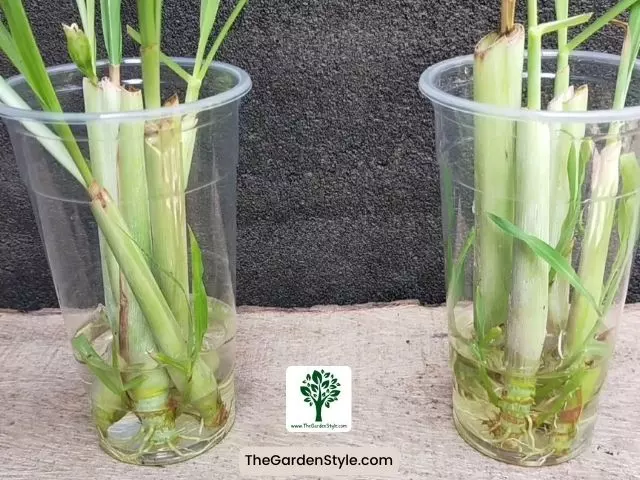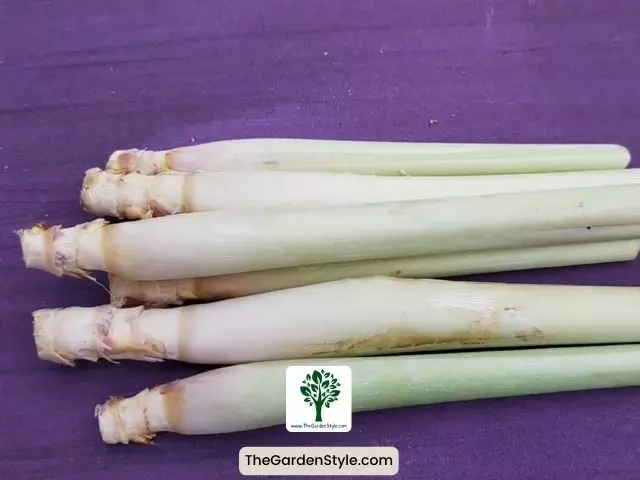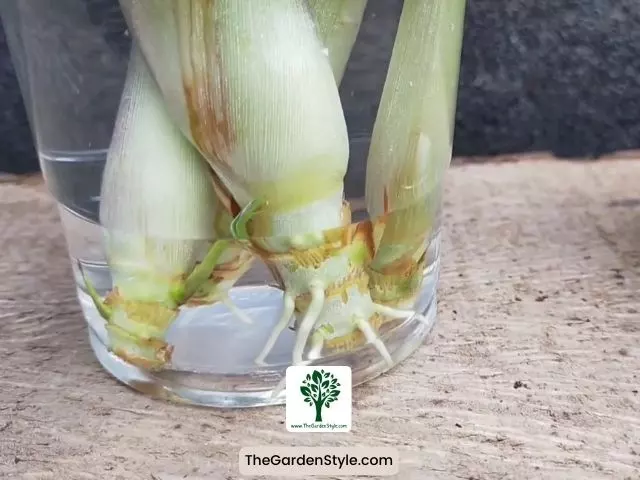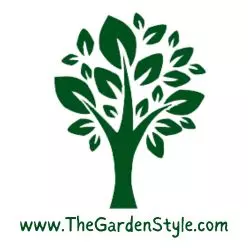Lemongrass, known scientifically as Cymbopogon citratus, is a popular herb widely used in Asian cuisine and also for its medicinal properties. Not only is it easy to grow, but it also adds a beautiful touch to your garden with its tall, slender stalks and lush green leaves. Here’s a step-by-step guide on how to propagate lemongrass.
Table of Contents
What Is the Best Way to Propagate Lemongrass?
Despite the fact that you can multiply lemongrass plants in different ways, the success rate of propagating lemongrass from stalks is generally considered a reliable method and the best way to do it. Like any garden propagation, the overall success can vary based on several factors, such as the freshness of the stalks, the care taken during the propagation process, and the growing conditions provided. That’s why, based on my experience, I recommend starting with multiple stalks, as not all of them may root, mainly if you are a beginner and this is your first time. For instance, if you start with 5 or 6 healthy stalks, you’re likely to end up with a few successful plants. I will say the critical steps that ensure 90% of the victory are selecting and preparing the stalk. So, pay close attention to the step-by-step instructions below.

How to Propagate Lemongrass from Stalks Step by Step
Let’s see in detail, step-by-step.
Choosing Your Lemongrass
As I explained before, even if you can start lemongrass from seed, I highly recommend this method, which is the easiest way to propagate lemongrass. It is from store-bought stalks. When choosing lemongrass for propagation, choose fresh, green stalks that have some of their base intact.
Preparing the Stalks
- Selecting the Stalks: Start by selecting healthy, fresh lemongrass stalks from a grocery store or farmers market. Look for stalks that are firm and pale to bright green. Avoid any that are yellowing or drying out.
- Trimming the Stalks: Using a sharp knife, cut off the top of the stalks, leaving about 4-6 inches (10 to 15 cm) from the base. This helps to prevent rot and encourages the plant to put more energy into root development.
- Removing the Leaves: Strip away all the leaves, leaving only the stalk. The leaves can draw energy away from root formation. Plus, they can rot if they’re submerged in water, which could spoil the whole propagation process.
- Preparing for Rooting: Make a fresh cut at the base of the stalks to open up the plant tissues and promote water uptake and root formation. You can also lightly scrape the sides of the bottom inch of the stalk to encourage further rooting.

Rooting the Stalks
Place the stalks in a jar with enough water to cover the base but not the entire stalk. Place the jar in a sunny window and change the water every few days to prevent mold and rot.


Planting the Stalks
Once the roots are about 1-2 inches (2.5 to 5 cm)long, you can plant the stalks in the soil. Choose a location with full sun and well-draining soil. Plant the stalks about 1 inch (2.5 cm) deep, ensuring the roots are fully covered.


Caring for Your Lemongrass
Water your lemongrass regularly, but avoid overwatering. Lemongrass prefers slightly dry conditions. Fertilize with a balanced, all-purpose fertilizer every few weeks during the growing season.
Harvesting Your Lemongrass
You can start harvesting once the stalks are about 12 inches (30 cm) tall. Cut the stalks at ground level, leaving the roots in place for future growth.
Remember, lemongrass is a tropical plant and may not survive freezing temperatures. In colder regions, consider growing lemongrass in pots that can be brought indoors during winter.
How Long Does It Take for Lemongrass Roots to Grow?
The time it takes for roots to grow in lemongrass can vary. Generally, when you place the prepared stalks in a glass of water and keep them in a warm, sunny location, roots should start to appear in about 2 weeks. However, this can vary depending on the condition of your stalks and the environment. It could occur in a matter of days or take a few weeks. Once the roots are a couple of inches long, they’re ready to be transferred to pots of compost. Remember to change the water every couple of days to prevent bacterial growth.
Gardening Tips for Caring Lemongrass While Propagating and Growing
Watering: Lemongrass likes moist soil, but it doesn’t like to be waterlogged. Make sure the soil is well-draining. Water thoroughly, then allow the top inch of soil to dry out before watering again.
Sunlight: Lemongrass loves full sun. If you’re growing it indoors, place it near a sunny window where it will get at least 6 hours of sunlight each day.
Temperature: Lemongrass is a tropical plant and prefers warm temperatures. It will not tolerate frost. If you live in a cooler climate, consider growing your lemongrass in a pot so you can bring it indoors during the winter months.
Fertilizing: Feed your lemongrass with a balanced, all-purpose fertilizer every few weeks during the growing season to support its rapid growth.
Pruning: Regularly trimming your lemongrass will encourage bushier growth. You can also remove dead leaves as needed to keep the plant looking its best.
Pest Control: Lemongrass is pretty resistant to pests, but if you notice any, use an organic insecticidal soap to keep them at bay.
How to Use Lemongrass After Harvesting
After harvesting lemongrass, you can use it in a variety of ways:
Cooking: The most edible part of lemongrass is near the bottom of the stalk. The stalks are somewhat hard, so they’re typically crushed to allow the lemony flavor to come through when cooking. Once it’s cooked, the tender part inside can be sliced and added to various dishes.
Teas and Soups: Both the stalk and foliage of lemongrass are used in many prepared dishes, such as teas and soups. You can dry the leaves for teas or soups.
Freezing: If you don’t plan to use the harvested lemongrass right away, it can be frozen for up to six months.
Remember to remove and discard the woody portions of the stalks after harvesting.
I hope this lemongrass propagation guide boosts your gardening success! For more insights into these plants, check out our article on types of citronella plants – perfect for fellow green thumbs like yourself!
Save these pins for later so you can use this gardening guide for lemongrass propagation from stalks.



